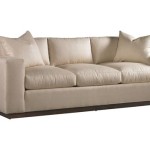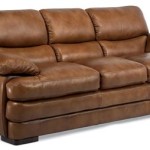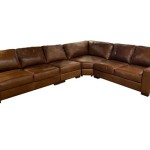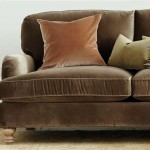Sofa vs. Loveseat: A Size Comparison and Guide
When furnishing a living space, selecting the right seating is paramount. Sofas and loveseats are two of the most common and versatile options, offering comfort, style, and functionality. However, distinguishing between the two, particularly in terms of size, is crucial for ensuring that the chosen piece fits seamlessly into the intended area and adequately meets the needs of the occupants. This article delves into a detailed comparison of sofa and loveseat sizes, exploring the typical dimensions, factors influencing size variations, and considerations for selecting the appropriate option.
The primary distinction between a sofa and a loveseat lies in their seating capacity and consequently, their overall size. A sofa, also known as a couch, is generally designed to accommodate three or more people. Loveseats, on the other hand, are intended for two individuals, hence the name. This fundamental difference in seating capacity directly impacts the dimensions, affecting the length, depth, and height of each type of furniture.
Typical Dimensions: Sofas
Standard sofas typically range in length from 70 inches to 96 inches (approximately 5.8 feet to 8 feet). This measurement reflects the overall width of the sofa, which determines the number of people that can comfortably sit side-by-side. The depth of a sofa, measured from the front edge of the seat to the back, usually falls between 32 inches and 40 inches. This dimension impacts the seating comfort and the amount of space needed to accommodate the sofa in a room. The height of a sofa, measured from the floor to the top of the backrest, generally ranges from 25 inches to 35 inches. This height plays a role in the overall aesthetic of the room and influences the visibility of other furniture pieces behind the sofa.
Within the broad category of sofas, variations in size are common. Apartment-sized sofas, for example, are designed for smaller spaces and typically measure between 70 and 80 inches in length. These sofas offer a compromise between seating capacity and space efficiency. Conversely, larger sofas, often referred to as sectional sofas, can extend well beyond 96 inches in length, sometimes reaching 120 inches or more. Sectional sofas are often composed of multiple modular sections that can be arranged in various configurations to fit the specific dimensions of a room.
Beyond length, depth and height can also vary significantly. Deep-seated sofas, characterized by a depth exceeding 40 inches, offer a more relaxed and lounge-like seating experience. These sofas are often favored for informal living rooms or media rooms. Sofas with higher backrests can provide greater support and comfort, particularly for individuals who prefer a more upright seating posture.
Typical Dimensions: Loveseats
Loveseats are designed to provide comfortable seating for two people, and their dimensions reflect this purpose. The typical length of a loveseat ranges from 50 inches to 70 inches (approximately 4.2 feet to 5.8 feet). This length allows two individuals to sit comfortably without feeling cramped. The depth of a loveseat is generally similar to that of a sofa, falling within the range of 32 inches to 40 inches. This depth ensures adequate seating space and comfort. The height of a loveseat, like that of a sofa, typically ranges from 25 inches to 35 inches.
While the standard dimensions of a loveseat fall within these ranges, variations can occur based on the design and style of the piece. Some modern loveseats feature a sleeker, more compact design, with lengths closer to 50 inches. Others, particularly those designed for larger individuals or for a more luxurious seating experience, may approach 70 inches in length. As with sofas, the depth and height of loveseats can also vary, depending on the desired aesthetic and level of comfort.
It's important to note that the term "loveseat" can sometimes be used loosely to describe a small sofa. In these cases, the dimensions may fall closer to the lower end of the sofa range, blurring the line between the two categories. Therefore, it's crucial to carefully examine the actual dimensions when purchasing a loveseat to ensure that it meets the intended seating needs and fits appropriately within the designated space.
Factors Influencing Size Variations
Several factors contribute to variations in the size of sofas and loveseats. Design style is a primary influence. Modern, minimalist designs often feature clean lines and smaller dimensions, while traditional or Victorian-inspired designs may incorporate larger frames and more elaborate detailing, resulting in a greater overall size. Arm style also plays a role. Sofas and loveseats with rolled arms or wide, padded arms will generally have a greater overall width than those with slim, straight arms.
The materials used in construction can also affect the size. Sofas and loveseats with solid wood frames or reinforced metal frames may be more substantial in size than those constructed with lighter materials. The type of upholstery can also influence the overall appearance and perceived size. Thick, plush upholstery can make a sofa or loveseat appear larger, while thinner, more streamlined upholstery can create a more compact profile.
Intended use is another key consideration. Sofas and loveseats designed for high-traffic areas or for families with children may be built with more robust frames and durable upholstery, potentially resulting in larger dimensions. Those intended for formal living rooms or guest rooms may prioritize aesthetic appeal over practicality, leading to variations in size based on design preferences.
Furthermore, the manufacturer's specific design choices play a crucial role. Different manufacturers may adhere to slightly different standards for sizing, leading to variations even within the same category of furniture. For instance, one manufacturer's "loveseat" may be slightly larger or smaller than another's, even if both are intended to seat two people. This underscores the importance of carefully reviewing product specifications and dimensions before making a purchase.
Customization options can also contribute to size variations. Some manufacturers offer the option to customize the dimensions of their sofas and loveseats, allowing customers to tailor the furniture to their specific needs and preferences. This can be particularly useful for individuals with unique space constraints or specific seating requirements.
The presence of features such as reclining mechanisms or built-in storage compartments can also increase the overall size of the furniture. Reclining sofas and loveseats often require additional space to accommodate the reclining motion, while those with built-in storage may have thicker frames or deeper bases.
Finally, variations in measurement techniques can sometimes contribute to discrepancies in reported sizes. Different retailers may measure furniture using slightly different methods, leading to minor variations in the reported dimensions. It is advisable to consult with a sales representative or review detailed product information, including diagrams illustrating the measurement points, to ensure accurate sizing information.
Selecting the appropriate size sofa or loveseat requires careful consideration of the available space, the intended use of the furniture, and the desired aesthetic. Measuring the room accurately is the first crucial step. This involves determining the precise dimensions of the area where the furniture will be placed, including the length, width, and height. It is also important to consider the placement of doorways, windows, and other architectural features that may impact the layout of the room. Accurate measurements will help to avoid selecting a sofa or loveseat that is too large or too small for the space.
Once the room has been measured, it is essential to consider the overall layout and flow of the space. The furniture should be arranged in a way that promotes comfortable conversation and easy movement throughout the room. Avoid overcrowding the space with too much furniture, as this can make the room feel cramped and uncomfortable. Consider the placement of other furniture pieces, such as coffee tables, end tables, and entertainment centers, to ensure that they are properly proportioned to the sofa or loveseat. It's usually advised to allow at least 18 inches between the seating and the coffee table.

Loveseat Vs Sofa Size Cost And Functional Differences

Loveseat Dimensions How To Find The Best Size For Your Space

Sofa Vs Loveseat What S The Difference

Sofa Dimensions Loveseat Contemporary Fabric

Sofa Dimensions 101 Measuring For Your Perfect

A New Sofa Don T Forget To Check The Dimensions Here S Guide Life Of Tall

Sofa Size Calculator

Standard Sofa Dimensions For 2 3 4 And 5 Person Charts Diagrams Covers Slipcovers Chairs Plush Couch

Sofa Dimensions For 2 3 4 5 6 Person Couches Diagrams Included Home Stratosphere

Loveseat Vs Sofa Size Cost And Functional Differences








